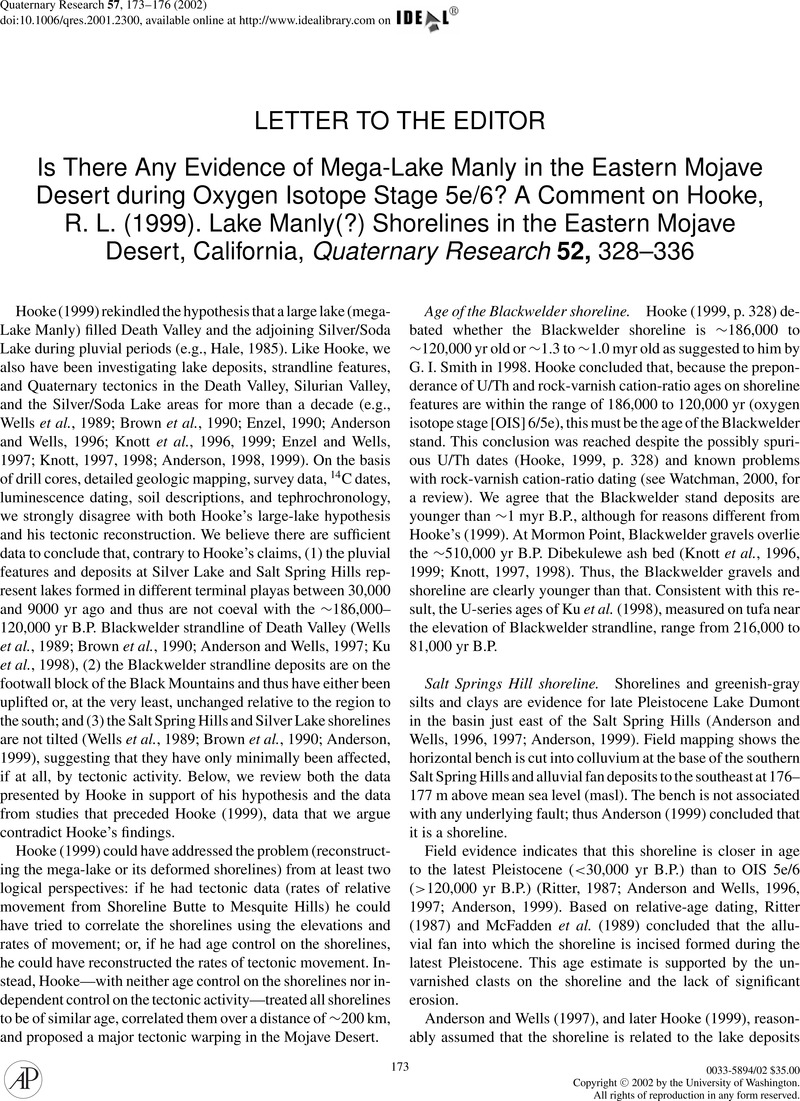Crossref Citations
This article has been cited by the following publications. This list is generated based on data provided by Crossref.
Owen, Lewis A.
Bright, Jordon
Finkel, Robert C.
Jaiswal, Manoj K.
Kaufman, Darrell S.
Mahan, Shannon
Radtke, Ulrich
Schneider, Joan S.
Sharp, Warren
Singhvi, Ashok K.
and
Warren, Claude N.
2007.
Numerical dating of a Late Quaternary spit-shoreline complex at the northern end of Silver Lake playa, Mojave Desert, California: A comparison of the applicability of radiocarbon, luminescence, terrestrial cosmogenic nuclide, electron spin resonance, U-series and amino acid racemization methods.
Quaternary International,
Vol. 166,
Issue. 1,
p.
87.
Phillips, Fred M.
2008.
Special Paper 439: Late Cenozoic Drainage History of the Southwestern Great Basin and Lower Colorado River Region: Geologic and Biotic Perspectives.
Vol. 439,
Issue. ,
p.
115.
Knott, Jeffrey R.
Machette, Michael N.
Klinger, Ralph E.
Sarna-Wojcicki, Andrei M.
Liddicoat, Joseph C.
Tinsley, John C.
David, Brian T.
and
Ebbs, Veva M.
2008.
Special Paper 439: Late Cenozoic Drainage History of the Southwestern Great Basin and Lower Colorado River Region: Geologic and Biotic Perspectives.
Vol. 439,
Issue. ,
p.
1.
Knott, J. R.
Phillips, F. M.
Reheis, M. C.
Sada, D.
Jayko, A.
and
Axen, G.
2018.
Geologic and hydrologic concerns about pupfish divergence during the last glacial maximum.
Proceedings of the Royal Society B: Biological Sciences,
Vol. 285,
Issue. 1881,
p.
20171648.





